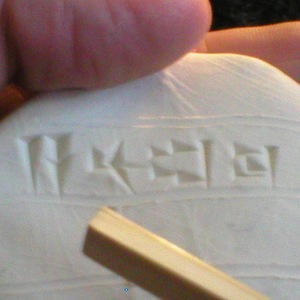Twitter Chats for "Introduction to the Old Testament"
Something new this year for the online Intro class: weekly Twitter chat.
How It's Done
On Twitter, you normally see the posts of people you follow, in an undifferentiating stream with the latest posts at the top. However, you can also view a Search window, and see all posts that include your search term…including posts from people you do not follow. So if a set of participating users agree to include a shared search term in their posts, then they can use that Search window as a chat forum. By convention, such a search term is proceeded by the hash sign (#), and is called a "hashtag": for example, our hashtag is the hash sign followed by our course number, #11500x. We meet Tuesday evenings 7:00-8:00 pm, CT.
Our Course
This course is "Introduction to the Old Testament," a fully online course with about 20 learners, taught by me at Garrett-Evangelical Theological Seminary. The course is completely asynchronous: there is no time at which all learners must participate together in real time. Also, our learning management system (Moodle) does not include a "virtual classroom" module. (It could, but we have not purchased one.) So, a Twitter hashtag chat allows us a space in which to have synchronous engagement with one another.
How It's Going
I am using the one-hour weekly Twitter chats to engage "big ideas" or "essential questions" that are foundational to the tasks they are accomplishing in the course; for example, "What is 'academic biblical studies'?"; "Academic biblical studies as public work"; "Biblical literature as narrative art"; and so on. Participation is voluntary, and has ranged from 10-14 learners (of my 20) to a scant 2.
Since Twitter is a public forum, our followers from outside of our class have discovered our chat and joined us. This includes my colleagues who teach biblical studies elsewhere (some known personally to me, but not all), former students, and other interested outsiders.
Each week, I have assembled a list of prompts, to keep things going or to get things back on track if necessary. I have not had to use them often, but I feel more comfortable having them ready to hand. Some "template" tweets are a good idea to keep handy though: reminding learners to use the course hashtag, announcing the chat and its topic, inviting lurkers to join in, etc.
Nearly all of my learners are brand new to Twitter. In every class I teach, whether online or face-to-face, I like to incorporate an activity that will introduce most of the learners to a new digital accomplishment of some sort. The idea is not that they should all like Twitter, but that they should have regular, guided experiences of braving new digital tasks.
Have you ever used Twitter chats as a teacher or as a learner? Are there other digital "new frontiers" that are part of your course work this year?
[Twitter Chats for Introduction to Old Testament was written by G. Brooke Lester for Anumma.com and was originally posted on 2012/09/27. Except as noted, it is © 2012 G. Brooke Lester and licensed for re-use only under CC BY-NC-ND 3.0.]
